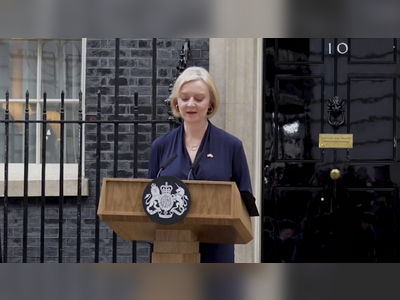UK Unemployment Hits 5% as Wage Growth Slows, Paving Way for Bank of England Rate Cut
Labour market sharpens as unemployment rises and pay growth weakens ahead of December monetary policy decision
Unemployment in the United Kingdom climbed to five per cent in the three months to September 2025, marking its highest level since early 2021, as pay growth also cooled to 4.6 per cent excluding bonuses, official data released on Tuesday show.
The jobless rate edged up from 4.8 per cent in the previous quarter, while a separate measure from payrolls showed employment fell by 32,000 in October following a similar drop in September — the largest two-month decline since late 2020. These developments suggest that the labour market is losing momentum and may relieve pressure on wages and inflation.
The easing in pay growth and rising unemployment have bolstered expectations that the Bank of England will consider a cut to its benchmark interest rate in December.
Futures markets are now pricing in around 65 basis points of cuts by the end of 2026, up from 55 basis points previously.
Economic analysts say the rise in unemployment and softening wage growth could remove a key impediment to monetary easing after the bank insisted on clearer evidence of easing inflation pressure before moving.
The drop in the pound against the dollar and rally in UK government bonds reflect market anticipation of policy loosening.
For the government, which is preparing its Budget on 26 November, the weaker jobs figures underscore the delicate balance between supporting employment and easing inflation.
While the figures indicate the labour market is cooling, economists caution it may become more than a temporary blip given recent employer tax rises and minimum wage increases.
Overall, the data signal a notable shift in UK labour market dynamics — moving from tight conditions to more evident slack — and provide the Bank of England with greater latitude to act should inflation continue to recede.
The jobless rate edged up from 4.8 per cent in the previous quarter, while a separate measure from payrolls showed employment fell by 32,000 in October following a similar drop in September — the largest two-month decline since late 2020. These developments suggest that the labour market is losing momentum and may relieve pressure on wages and inflation.
The easing in pay growth and rising unemployment have bolstered expectations that the Bank of England will consider a cut to its benchmark interest rate in December.
Futures markets are now pricing in around 65 basis points of cuts by the end of 2026, up from 55 basis points previously.
Economic analysts say the rise in unemployment and softening wage growth could remove a key impediment to monetary easing after the bank insisted on clearer evidence of easing inflation pressure before moving.
The drop in the pound against the dollar and rally in UK government bonds reflect market anticipation of policy loosening.
For the government, which is preparing its Budget on 26 November, the weaker jobs figures underscore the delicate balance between supporting employment and easing inflation.
While the figures indicate the labour market is cooling, economists caution it may become more than a temporary blip given recent employer tax rises and minimum wage increases.
Overall, the data signal a notable shift in UK labour market dynamics — moving from tight conditions to more evident slack — and provide the Bank of England with greater latitude to act should inflation continue to recede.









